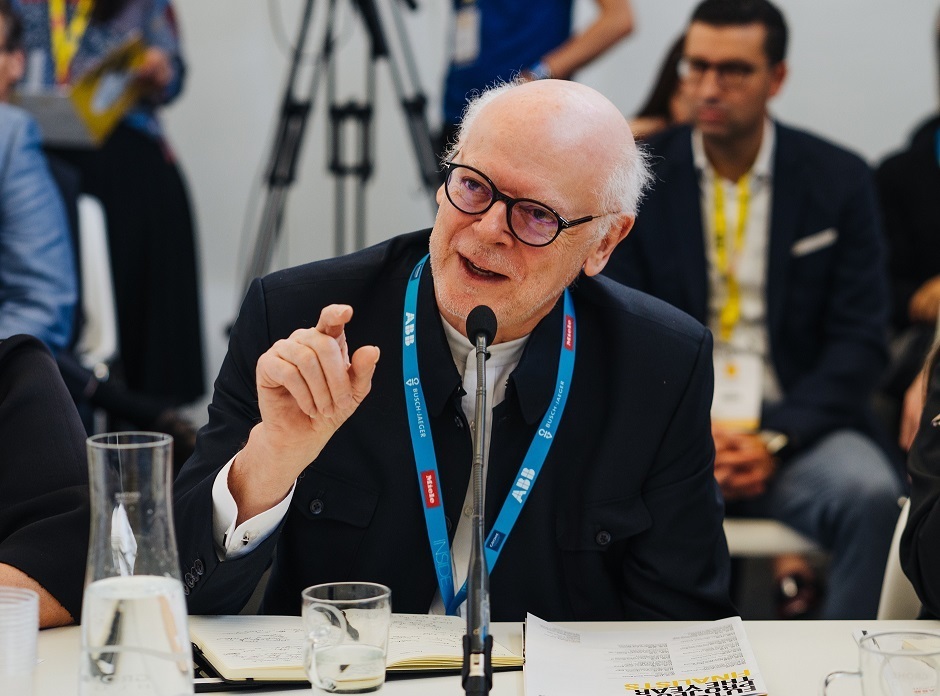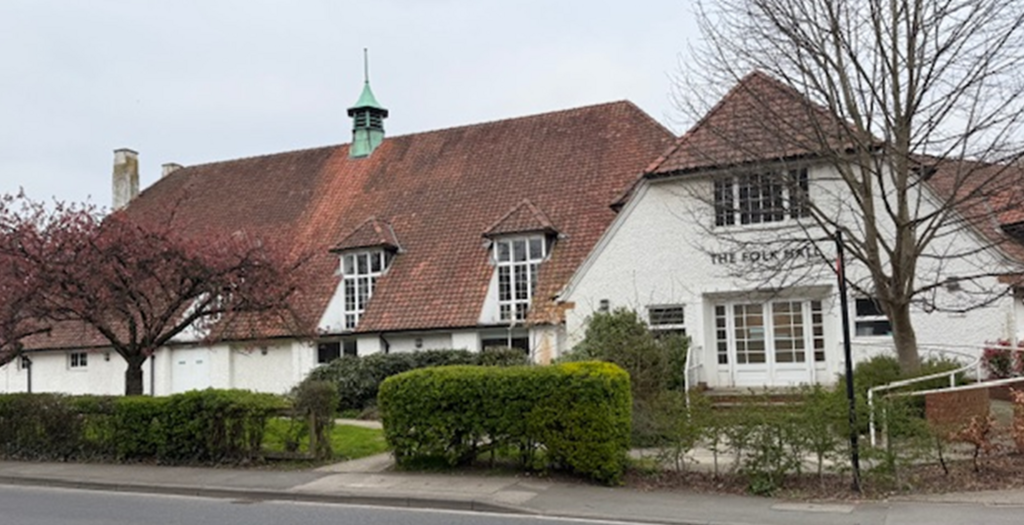
Architecture, mind and memory
I sensed immediately that something was amiss. Entering, I saw my desk ransacked, papers strewn across the floor, broken glass everywhere. We had been burgled.
Amongst the losses was my precious watch collection which included a Timex ‘Hopalong Cassidy’ and a black Roamer gifted, respectively, by my grandmother and parents.

Also stolen, a beautiful Elgin, deposited as security against a gambling debt. The US airman who had escrowed it with my grandfather failed to return from a subsequent bombing mission deep over Germany.
Then there was a lovely 19th century Waltham pocket watch which I purchased in a Killarney antique shop for just 95 Euros, only to discover that its pedigree, discreetly recorded in minuscule engraving on the inside of its cover, justified a valuation of £5,000.
They even took a mock-up of a combined wrist-watch and calculator (a crude forerunner of the infamous Casio that was to hit the market shortly after) that I had ‘invented’ back in 1973.
Happily, I still have a delightful little ‘Full Hunter’ pocket-watch made by Woodford, a company founded in Birmingham in 1860. The landed gentry frequently used such watches when hunting, hence the name. (Half-Hunters had a second smaller glass in the hinged lid, allowing the time to be read without opening the case.)
By the mid-19th century, accurate time-keeping had become so essential to operational efficiency that rail companies issued senior staff with pocket watches. In America, Waltham and Elgin were amongst registered suppliers. Engineered to maintain accuracy within plus or minus three seconds a day, UK stationmasters’ timepieces were collected at each day’s end and returned to a central point to be re-set against the reading of a ‘master’ clock. Such challenges in terms of synchronising time are barely imaginable today, given self-regulating digital displays that are accurate to the milli-second.
The passage of time usually tempers grief, an entirely abstract concept constituting complex emotional and psychological responses to loss, but even now, some ten years later, I continue to suffer real grief at the loss of my watch collection. I can only think that it is mainly the role of these inanimate objects as links with my past that is at work here. Theoretical psychologist Nicholas Humphrey has conducted fascinating research into this field of consciousness and the importance of our contextual environments. (Learn more about his work here: https://share.google/QxKeyKsodOoPXqnxB
Similar emotions, albeit magnified many-fold, must have affected the families who unwittingly found themselves and their homes in the way of the West Midlands to Leeds section of the proposed HS2 rail route. Although now axed, more than 550 residential properties had been acquired to facilitate its construction. Every property a home, every loss no doubt the cause of intense distress and grief. Ironically, they are now being offered back to their former owners at current market value, and those that are not ‘bought back’ will be offered on the open market from 2026. Either way the damage done will, in most cases, be irreparable.
None of this is new: tens of thousands of homes have been acquired under compulsory orders to pave the way for our nation’s motorways leading to countless individual stories of grief, upset, broken relationships and disrupted communities. Here is the lengthy government pamphlet that could signal the start of your family’s nightmare:

(See:https://share.google/9i21754tmLBnlOZOC)
While such disruption is inevitable in the face of progress, at least those affected can be comforted by the knowledge that due process has taken place and that they have received some level of compensation towards their asset’s ‘real’ value, even where their grief remains untempered. Not always the case in some countries, even in peacetime.
And certainly not the case in war: one member of the Ukrainian family which has lived with us since Russia invaded, recently learned that her apartment, abandoned in haste as they escaped, had been destroyed. As with my watches, grief (albeit greatly intensified) was palpable in the face of material loss.
Think of Coventry or Dresden in World War II, or the destructive effects of a myriad of conflicts since. They have resulted in widespread and dreadful physical injuries, and immense social and economic challenges, but the psychological impact on individuals and communities caused by the wanton destruction of their ‘material world’ has neither been properly acknowledged nor adequately understood.
This is at last changing, with a raft of new research papers published by the Journal of Community Health, The National Library of Medicine, and World Psychiatry, offering testimony to the mental health impacts of damage to built infrastructure on both individuals and communities.
In the aftermath of both WW1 and WW2, major new housing programmes were delivered through the municipal sector. From the outset the focus was upon the overall well-being of citizens, particularly the poorest within our communities. As Minister of Health between 1924 and 1929, Neville Chamberlain’s major reforms recognised the tripartite relationship between health, housing and employment, as revealed in Keith Feiling’s superb 1946 biography.
This emphasis on the relationship between housing and health was continued in the late 1940s by the Atlee government – it was for very good reasons that the politician Nye Bevan oversaw major housing reforms while Minister of Health.
The strength of this historic link between health and housing was further illustrated by the fact that the respective presidents of the RIBA and the BMA (British Medical Association) would for a period routinely meet to discuss the ongoing collaboration of their disciplines in pursuit of the social and health related wellbeing of the population.
We would do well today to re-invigorate discussion between the medical professions and those who serve within the construction industry. Not, I hasten to add, so much in terms of physical health: infant mortality is mercifully low and the problems of damp and disease arising from failures in water supply and drainage are largely a thing of the past.
I am talking here about mental health. Little study has been undertaken into the impacts of architecture, urban design and planning on the mental health of our citizens, their families, and their wider communities. Our house-builders, in particular, need to contemplate these issues in their rush to acquire land for the sole purpose of distributing housing. They could all take a good lesson from the work of Joseph Rowntree who was so appalled at the conditions his workers had to endure in the slums of York that he initiated the building of the village of New Earswick, importantly complete with its ‘Folk Hall’, as Rowntree well understood the need for such facilities in terms of the social and mental welfare of the community.

Another interesting example of the need for shared facilities in terms of the mental health and happiness of a community can be found in Bruges, where the disused Church of Madeleine has been re-purposed for social benefit. Unlike the more common conversions of churches for residential or commercial use, it has been retained as a place to enhance the spiritual, cultural and mental wellbeing of the community around. Notably, a simple 17 metre swing hanging from the vaulted roof with a seat formed by a piece of tree trunk provides a context for contemplation.

This wonderful building is currently hosting an installation by the Belgian ‘social psychologist’ Bram Boris Van Acker, who designs products, services and art for a psychologically sustainable society. In contrast to consumer-orientated imperatives, his work focus on ‘intrinsic motivation and basic psychological needs rather than extrinsic motivation and artificial needs’.
In our increasingly complex world, mental health in terms of both the individual and the wider community is now an issue of primary importance. The architectural and health-based professions would do well to re-engage in common purpose and collaboration here: the design of residential accommodation, from traditional housebuilding to complex apartment blocks, needs to be better informed in their response to the newly emerging mental health crisis.
Founder Partner






